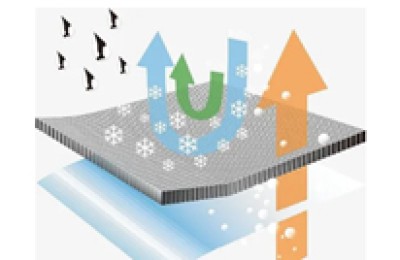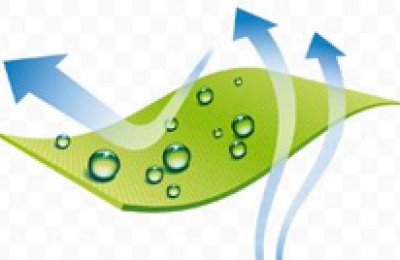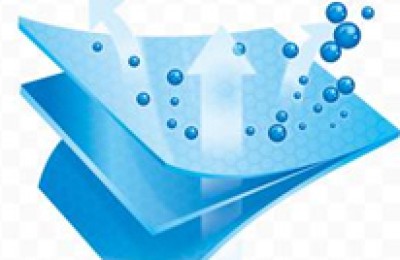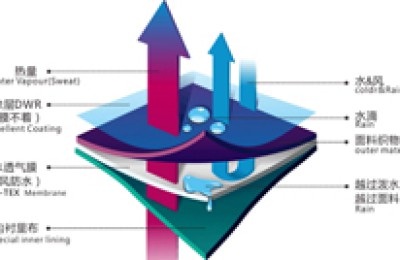
How to deal with the various changes brought about by the “external appreciation and internal depreciation” of the RMB will continue to test the wisdom of every foreign trade business owner
The latest data from the China Foreign Exchange Trading Center showed that the central parity rate of the RMB against the U.S. dollar was reported at 6.0930 on the 14th, a continued increase of 20 basis points from the previous trading day, once again setting a new record since the exchange reform.
“This rising trend at the beginning of the year has exceeded our expectations.” On the same day, Li Ruiqun, general manager of Qingdao Foruixi Import and Export Co., Ltd., spoke in a serious tone on the phone, because the company believed that the RMB exchange rate would not have a significant increase at the beginning of the year. Changes, so there was no hedging in the order just signed. “Within 3 months, if the RMB appreciates by more than 2%, our order will be in vain.”
During interviews, more and more foreign trade business owners began to talk about the impact of the 34.8% appreciation of the RMB against the US dollar since the exchange reform. At the same time, the many operating pressures brought about by the “internal depreciation” of the RMB are also frequently mentioned.
“The external appreciation of the RMB has brought a lot of financial costs, and the internal depreciation has increased corporate costs. Enterprises can be said to be surviving in a crack.” Li Ruiqun lamented.
How long will the trend of “external promotion and internal depreciation” last, and how companies can survive? Perhaps we can get a glimpse of it from the evolution of each import and export company in the eight years since the exchange reform.
External upswing: The profits of export companies have been cut in half, and importers have benefited greatly
“The best time should be from 1995 to 2005, which can be called the golden decade.” Speaking of the living environment of foreign trade companies, Zhang Honghai, the head of Qingdao Zhenxing Garment Processing Co., Ltd., which is engaged in the clothing export business, told reporters this express.
In 1998, Zhang Honghai went to work for a state-owned enterprise in Qingdao and was responsible for sales. The main products produced by the company were clothing and hat products. At that time, most garment processing companies in Qingdao were expanding overseas markets. As a “newcomer” who had just entered this industry, Zhang Honghai quickly saw the business opportunities brought by foreign trade. “The exchange rate is stable, the market is large, and profits are high. Many companies’ exports can grow two or three times every year.”
After 2004, Zhang Honghai, who had accumulated a certain amount of customer resources, decided to go it alone and established his own clothing foreign trade processing company. However, he soon discovered that he had overlooked a key issue—the exchange rate.
“When the exchange reform was launched in 2005, the RMB against the U.S. dollar adjusted from 8.2765 to 8.11 on July 21, an increase of 2.1%.” Zhang Honghai said, which means that the orders signed by the company shrank by 2.1% on the same day. .
In the following three years, Zhang Honghai fully felt the pressure brought by the appreciation of the RMB. “By the time the international financial crisis broke out in 2008, the RMB against the U.S. dollar had gone from the “8” era to the “6” era, with an increase of nearly 20%. Sometimes an order of US$1 million received at the beginning of the year was delivered six months later, and it was found that the exchange rate alone It will cost more than 400,000 yuan.” Zhang Honghai said that this caused the company’s product profit margin to drop from more than 40% initially to about 20%.
Zhang Honghai admitted frankly that in the face of exchange rate fluctuations and the rapid decrease in order volume after the international financial crisis, he once had plans to exit the industry. However, the stable performance of the RMB exchange rate against the US dollar from 2008 to 2010 allowed him to persevere. Two years of respite also allowed his company to prepare for the subsequent wave of RMB appreciation (from 2011 to now, the increase is about 12%). “Even so, our current profit margin has dropped to 15%, and our net profit margin has dropped to 15%.” It’s even single digits.”
In contrast, Li Ruiqun, who has recently entered the foreign trade industry, appears to have little experience in dealing with the recent appreciation of the RMB. “We mainly deal in the European and American markets. What impressed me most was that at the beginning of 2010, the exchange rate of RMB against the euro rose by 10% in the first three months. We lost a lot on one order at that time.”
Of course, opposite to the export companies that are constantly being squeezed by the appreciation of the RMB, the life of the import traders is relatively easy. Zhan Shu, chairman of Qingdao Laixing International Trading Co., Ltd., which is engaged in the import business of copper and other metal raw materials, will tell reporters that the price of imported copper in 2006 was about 5,800 US dollars per ton, which was equivalent to RMB based on the exchange rate of about 1:8 at that time. 45,000 yuan/ton, “If this payment is delayed for half a year, based on the exchange rate alone, we can earn 3,000 yuan per ton.”
At the same time, Zhan Shujiang said that import companies with relatively large business volumes will have certain foreign currency liabilities, and the appreciation of the RMB will also make them huge profits. “For example, a company has liabilities of US$10 million and the exchange rate is 6.3 , that is, 63 million yuan is needed to repay. If the RMB appreciates by 3% during the year and the exchange rate becomes 6.11, the company’s liabilities will become 61.1 million yuan, which means that the company will reduce its liabilities by 1.9 million yuan only through exchange rate changes.”
Internal derogation: increasing costs plague enterprises
However, even so, Zhan Shujiang’s company did not develop, but was squeezed. This is because, in the context of the “external appreciation” of the RMB, the “internal depreciation” also increases the operating costs of enterprises.
“Domestic inflation and rising prices have led to an increase in corporate costs, among which labor costs have increased.”The fastest part,” Zhan Shujiang said, “five years ago, my employee salary was more than 1,000 yuan per month, but now I can’t recruit anyone even with 3,000 yuan.” ”
Huang Xinquan, general manager of Qingdao Ange International Trading Co., Ltd., which is engaged in the import business of pork products, also told reporters that labor costs increased by 30% last year alone. “General labor costs account for 1/3 of corporate costs. This increase This greatly increases business costs.”
Of course, for some export processing companies, the “internal depreciation” of the RMB has also brought about rising raw material prices. Zhang Honghai said that because the country has implemented cotton import quota restrictions to limit the impact of large amounts of overseas cotton imports on the domestic cotton market, domestic textile companies mainly use domestic cotton, but the domestic cotton price per ton is four to five thousand yuan higher than the international cotton price. This has caused great pressure on export companies’ production costs.
In fact, because the cost benchmark for export orders when pricing is lower international cotton prices, order prices often hover at low levels. Using domestic high-cost cotton to produce cotton yarn that is constantly falling in price internationally means that the greater the production volume of a company, the more profits will be swallowed up.
“For export companies, the pressure is even greater. They are taking advantage of both sides and trying to survive in the cracks.” Li Ruiqun said.
Response: Transformation has become inevitable Hedging operations to hedge risks
During the interview, how long the RMB’s trend of “external appreciation and internal depreciation” can continue has become a topic of concern to many companies.
Wu Min, a professor at the School of International Trade at the University of International Business and Economics, told reporters that the performance of the RMB has a great relationship with China’s economic structure. “On the one hand, China’s relatively high economic growth rate, long-term trade surplus, and large-scale foreign capital inflows in recent years are all driving the RMB to rise against foreign currencies; on the other hand, moderate inflation is also the price of economic growth. In addition, our country Investment plays an important role in economic growth, resulting in a large amount of currency issuance, which in turn causes “internal depreciation.”
“Considering that the above factors will continue to exist in the next few years, the trend of RMB ‘external appreciation and internal depreciation’ will not change.” Wu Min said that foreign trade companies need to adjust as soon as possible to cope with subsequent changes, “For example, the RMB may be very We are about to enter the ‘5’ era, and labor costs will continue to grow.”
It is worth noting that some companies have begun to make changes. “Now it seems that transformation has become inevitable.” Zhang Honghai said that he intends to expand the sales of products in the domestic market and introduce a number of high-end product production lines. The person in charge of a toy manufacturing and export company in Pingdu said that he intends to transfer part of the company’s business to Canada in order to reduce the company’s operating costs and seek better business opportunities. “Some companies I know have also moved their production bases to Southeast Asian countries to avoid increases in operating costs such as labor.”
At the same time, most export companies interviewed by reporters began to focus on using financial instruments to hedge exchange rate risks. “Generally, when signing an order, hedging operations of corresponding amounts are done to hedge risks.” A business owner said.
However, this method has become difficult to operate as the RMB exchange rate has become increasingly volatile. Zhang Jisheng, general manager of Qingdao Yijia Light Industry Import and Export Co., Ltd., once told reporters that even banks and other professional institutions have difficulty grasping the trend of the RMB exchange rate, and companies will suffer losses if they go in the wrong direction.
In short, how to deal with the various changes brought about by the “external appreciation and internal depreciation” of the RMB will continue to test the wisdom of every foreign trade business owner.




